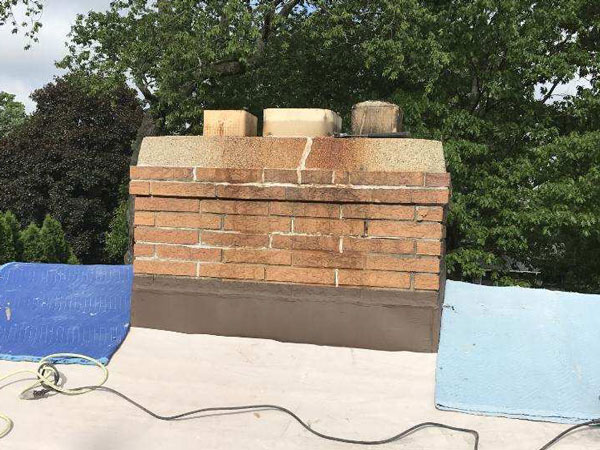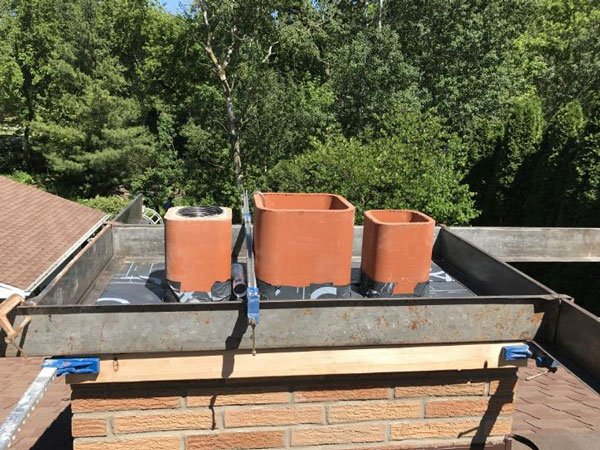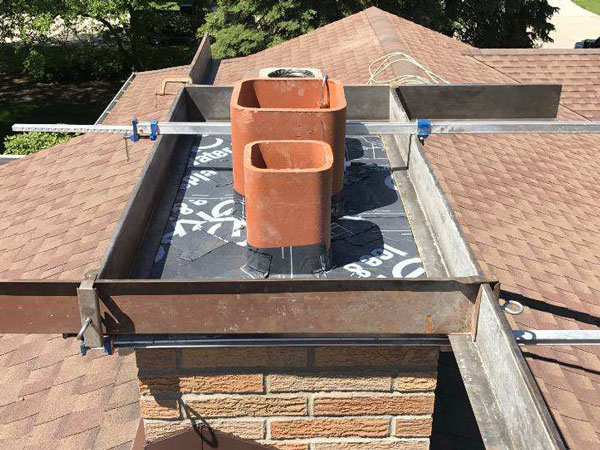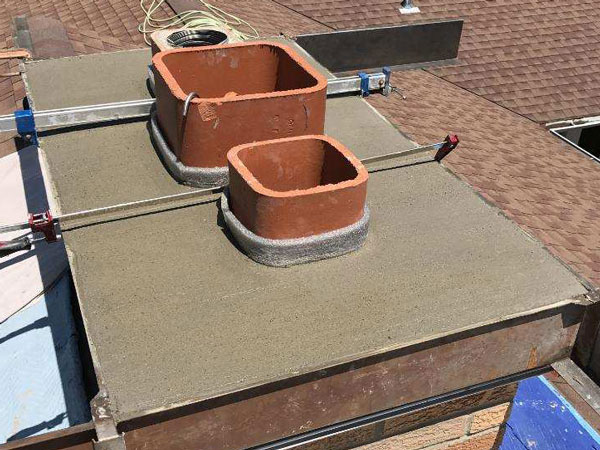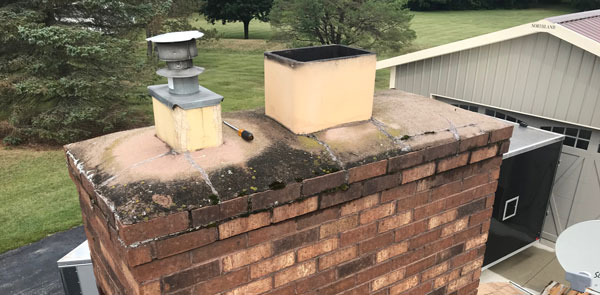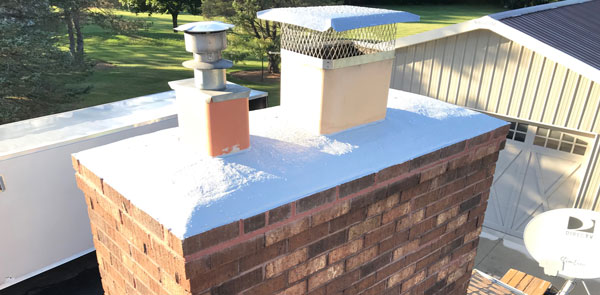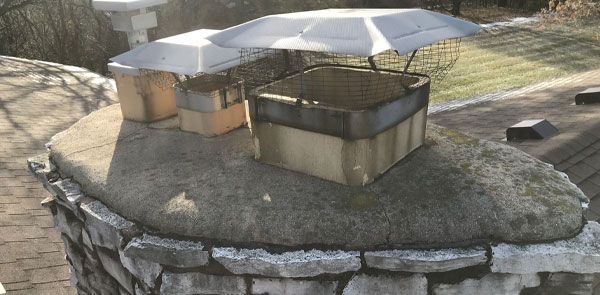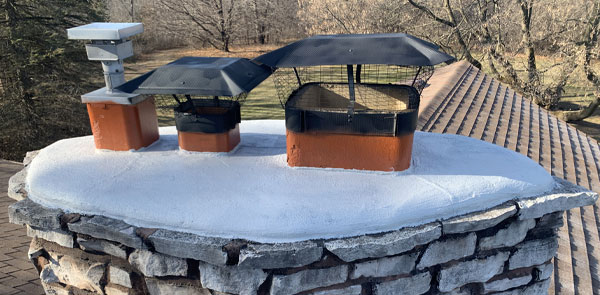Chimney Crowns
What Is a Chimney Crown?
A chimney crown—sometimes called the cap or top plate—is the concrete or metal cover fixed to the very peak of your chimney stack. Because it seals the flue opening, it works like an umbrella: rain, snow, and wandering wildlife stay out while smoke escapes freely. Without that first line of defense, water would seep into brick and mortar, leading to cracks, mold, and costly repairs.
Why Every Fireplace Needs a Crown
Moisture Protection Comes First
Water is the number-one enemy of masonry. When rain or melting snow soaks the chimney, the freeze-thaw cycle can split mortar joints and flake brick faces. However, a well-formed chimney crown slopes outward and sheds water before it reaches the flue. Therefore, the liner stays dry, and interior walls remain free of mildew.
Extra Safety Against Wind and Sparks
Most crowns add a screened cap. Consequently, leaves, twigs, and curious animals cannot block the passage. Better still, the mesh acts as a spark arrestor. Because embers cannot land on the roof, the risk of an accidental fire drops sharply. At the same time, the cover breaks up wind gusts, so smoke continues to draft upward—even on blustery evenings.
Common Crown Materials
- Stainless steel: resists rust in wet or coastal zones; lasts 20 + years.
- Galvanized steel: budget-friendly option for temperate areas; lasts 10 – 15 years.
- Copper: premium look that develops a rich patina; often exceeds 30 years.
- Poured concrete: blends with custom masonry designs; typically serves 25 + years.
Signs Your Chimney Crown Needs Help
- Cracked or missing mortar on the top surface
- Rust lines running down the exterior bricks
- White, powdery stains (efflorescence) on the stack
- Damp smells inside the firebox after heavy rain
If you notice any of these issues, schedule an inspection quickly. Early repairs usually mean sealing minor gaps instead of rebuilding the entire crown.
DIY Checks vs. Professional Service
Although binoculars allow you to spot large cracks from the ground, only a certified sweep can measure moisture levels, test draft, and confirm code-required clearances. Because safety is crucial, experts anchor the new chimney crown with stainless fasteners and verify that the screen mesh meets local fire regulations. As a result, the cover stays secure even in high winds.
Annual Maintenance Is Simple
- Book a sweep each fall.
- Ask the technician to brush soot off the crown and screen.
- Replace worn gasket seals or loose screws immediately.
- Apply a breathable water-repellent sealant every five years.
These short tasks take less than an hour yet add decades to your chimney’s service life.
Cost vs. Value
A basic galvanized crown often costs less than a single brick-replacement visit. Moreover, it blocks hundreds of gallons of water over its lifespan. Therefore, the return on investment is high. Homeowners also enjoy lower insurance premiums because many carriers offer discounts for spark arrestors.
Frequently Asked Questions
Does every fireplace need a chimney crown?
Yes. Whether the chimney is brick, stone, or metal, a crown shields the inner liner from weather, pests, and stray embers.
How long should a crown last?
With proper installation and routine sealing, stainless or copper models can last 20 to 30 years. Concrete versions last slightly less but still protect for decades.
Can I install a crown myself?
Although handy homeowners can set small metal caps, accurate sizing and safe ladder work are challenging. Therefore, most experts recommend hiring a certified sweep.
Key Takeaways
- The chimney crown deflects rain, snow, and animals, keeping the flue clear.
- A screened cap stops sparks and improves draft, which lowers fire risk.
- Regular inspections and quick sealant touch-ups prevent expensive masonry damage.
- Selecting the right material—stainless, copper, or concrete—ensures long-term durability.
By adding or upgrading your chimney crown now, you safeguard your home, extend the life of the entire chimney system, and enjoy every fire with peace of mind.
Chimney Crown Rebuild
Chimney crowns are usually made of concrete, and they are sloped to allow rainwater to drain away from the chimney. The sloped design helps to prevent water from pooling on the crown, which can lead to cracking and damage over time. They are also made of metal, such as stainless steel or copper, which are durable and can last for many years.
In addition to protecting the chimney from water damage, chimney crowns also serve other functions. They can prevent animals and debris from entering the chimney, which can cause blockages and other problems. These can also help to prevent downdrafts, which can cause smoke and other pollutants to enter the home. This is especially important in areas with high winds or other weather conditions that can cause downdrafts.
Chimney Crown Coat Sealant
When it comes to the installation, it is essential to work with a professional chimney sweep or contractor who has experience with chimney systems. A poorly installed crown can cause more harm than good, and it can lead to costly repairs down the road. A professional will ensure proper installation of the crown and its compatibility with the specific chimney system.
In conclusion, crowns are a critical component of any chimney system. They protect the chimney from water damage, prevent animals and debris from entering the chimney, and help to prevent downdrafts. To guarantee the proper installation and design of the crown with the specific chimney system, it is essential to work with a professional sweep or contractor. By doing so, homeowners can rest assured that their chimney will function properly and provide them with years of safe and enjoyable use.
Honest, Affordable & Experienced
The Clear Choice for your home improvement needs.
What Fox River Clients Are Saying


